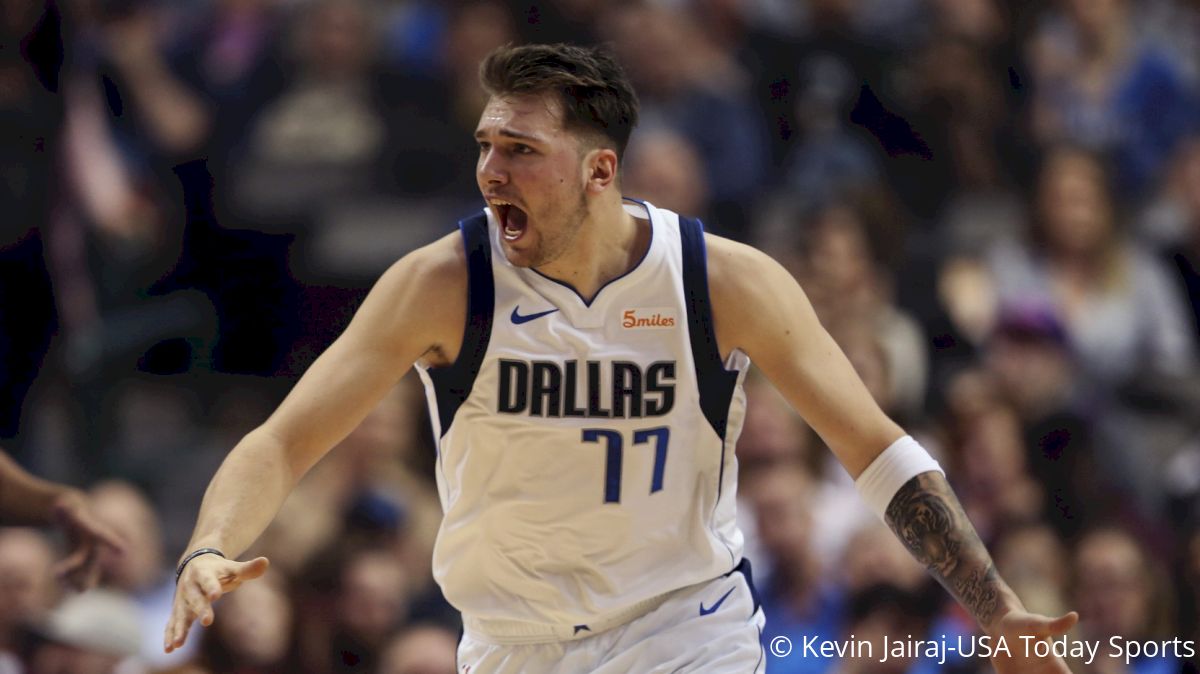NBA Rookie Of The Year Luka Doncic Boosting EuroLeague Profile
NBA Rookie Of The Year Luka Doncic Boosting EuroLeague Profile
Luka Doncic might just be the most important EuroLeague alumnus to ever play in the NBA. Here's why.

In the span of just 13 months, Luka Doncic claimed a EuroLeague championship with Real Madrid and was named EuroLeague Final Four MVP, EuroLeague MVP, and, most recently, NBA Rookie of the Year.
The most recent addition to the Slovenian Doncic’s fast-overflowing trophy case bears historical significance. He’s only the second EuroLeague product to win NBA Rookie of the Year, joining 2002 recipient Pau Gasol. However, Doncic came to the NBA this past season on a much different trajectory than Gasol.
Before joining the Memphis Grizzlies, Gasol played in the FC Barcelona system but only spent six games with the club’s EuroLeague roster. Make no mistake, those were six productive games. He averaged 18.5 points on 69.4 percent shooting with six rebounds per game, a fitting precursor to his NBA Rookie of the Year output of 17.6 points on 52 percent shooting with 8.9 rebounds per.
But no import since Toni Kukoc arrived in the NBA with a EuroLeague resume as loaded, nor with as much hype, as Doncic. Legendary Lithuanian center Arvydas Sabonis may be the exception, whose Rookie of the Year runner-up to Damon Stoudamire in 1996 was the closest a former EuroLeaguer came to the award before Gasol. Sabonis, however, was on the tail-end of his career then; Doncic, like Kukoc a quarter-century ago, came into the NBA hailed as the game’s future.
The Croatian Kukoc racked up a laundry list of awards prior to joining the Chicago Bulls in 1993, most notably winning a trio of EuroLeague championships with KK Jugoplastika (Split, Croatia), two EuroLeague Final Four MVPs with the club, and a third Final Four MVP as a member of Benetton Treviso in 1993.
Said Aleksandar Djordjevic in 1991: “I think that Toni Kukoc, despite being only 23, is the best Yugoslav basketball player ever.”
Even in 1991, that was particularly high praise. Kukoc’s fellow Croatian Drazen Petrovic was on the precipice of becoming an NBA superstar then, and already boasted a resume that included two EuroLeague championships and top scoring honors in the 1985 EuroLeague Finals.
Both Petrovic and Kukoc were named to the EuroLeague’s 50 Greatest Contributors in 2008. And, although his NBA career tragically ended in a fatal automobile accident in the summer of 1993, Petrovic’s All-NBA recognition that year made him the gold standard for European guards prior to France’s Tony Parker.
Petrovic joined the 1990 NBA Finals-qualifying Portland Trailblazers just a few months after ending his illustrious EuroLeague career with Real Madrid—the same Real Madrid club that fostered Doncic’s meteoric rise.
Were the EuroLeague Greatest Contributors honors revamped today, Doncic would surely appear alongside Petrovic, Kukoc, and Sabonis. In addition to his MVP and Final Four MVP awards, the spectacular guard twice won the league’s Rising Star Trophy.
All those honors preceding his Rookie of the Year recognition serves to bolster the American profile of EuroLeague.
Doncic’s successor to the Rising Star Trophy, Georgian Goga Bitadze, was drafted in the first round of last week’s NBA Draft. Bitadze has the potential to be as much of an instant-impact player for the Indiana Pacers as he was for Buducnost VOLI Podgorica.
Although he didn’t follow Doncic in winning Final Four MVP, Shane Larkin’s record-setting performance for Efes this past season wasn’t lost on the Boston Celtics faithful, per GM Alper Yilmaz. And Frenchman Nando de Colo, who helped CSKA Moscow down Larkin’s Efes club in the EuroLeague championship, remains a restricted free agent for another championship-winning franchise: the Toronto Raptors.
Luka Doncic’s hype-meeting performance for the Dallas Mavericks managed to carry the historic legacy of the EuroLeague into the NBA as effectively as it showcases the league’s prospective future. He may not be the first the EuroLeague alum to shine in the NBA, but his presence may be the most important.